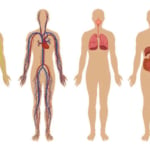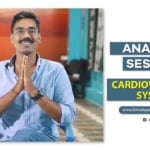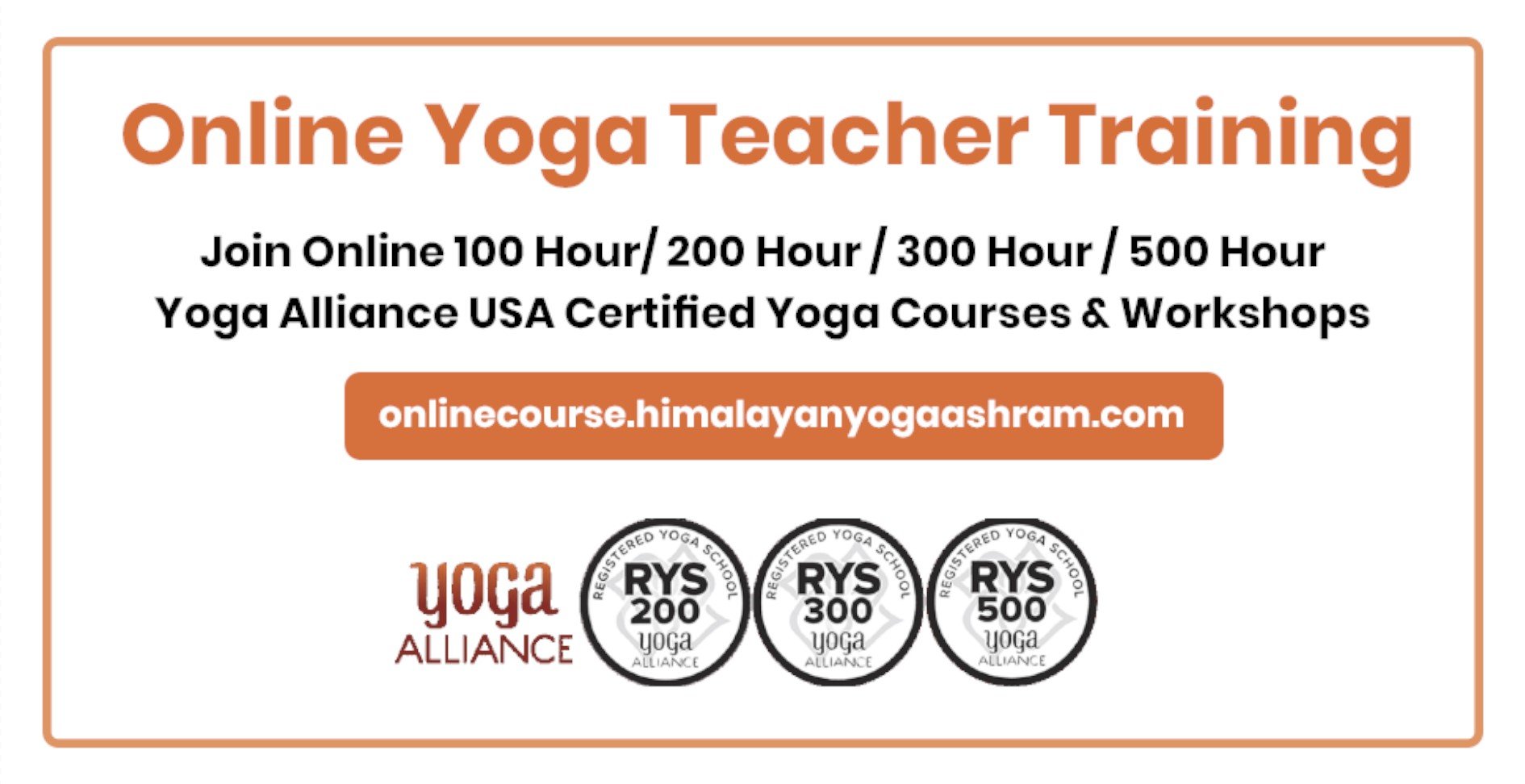Yoga Anatomy Types of Cartilages
By Himanshu JoshiYogahuman body, Yoga Anatomy Types of CartilagesNamaste my name is kirti and on behalf of himalayan yoga association i welcome you all to this online teacher training course i am a teacher here at himalayan yoga association and i will be taking you through the concepts and details of the human body and yoga altogether let’s hope you enjoy this course
let’s start namaste and welcome to the online yoga teacher training course in the previous session we discussed the various types of cartilage present inside the human body or we can also say the various connective tissues present in the human body in today’s session let’s go into something which will be extremely useful for you let’s talk about the pectoral girdle or the shoulder joint as it is but before
we do that let’s come together and chant the gayatri mantra as we proceed further in the class simply activate mudra on your hands lengthen your spine and completely close your eyes without worrying about anything in the world slowly breathe in and breathe out and allow your mind to gather all of this awareness and attention by using your breath as an instrument
please use the maximum capacity of your lungs without stressing them out in any way whatever is comfortable will automatically work on your mind and your body observe how the breath travels inside and outside if you’re having doubts focusing on your breath you can simply tell yourself to inhale and to exhale every time you breathe
now as soon as you’ve gathered your attention slowly bring your hands in front of your chest and join the heart center with your back of your fingertips the thumbs as it is and while you’re here with a lot of gratitude with a lot of pride in your own being let’s stand the guy three mantra together if you know the mantra you can chant it with me otherwise you can always repeat it afterwards slowly breathe in foreign
having absorbed the vibration of the mantra let’s start rubbing our palms gently rub your palms and create some energy between your hands do not open your eyes still and cover your eyes transfer this energy that you’ve created with your hands with your palms to your eyes first and massage your face the back of your neck and anywhere else you wish to transfer this energy to once
again fold your palms bow down to your fingertips with a few blinks open your eyes welcome back so in the previous few sessions i have discussed with you the skeleton system especially the human skeletal distance in with a lot of details as such now we are getting further about the parts of the skeletal system rather than the anatomy and the structure of the bones or the components of the skeletal system as I’ve already told you that the human skeletal system is divided into two parts the axial
skeletal system let me show it to you on this model right here now if you pay attention to the portions of the skeletal system then you’ll see that the appendicular skeletal system is all about the limbs as well as the lower limbs and the upper limbs or the arms and the legs the axial skeletal system is all about the ribcage the spine as well as the skull and the connection between the axial
skeletal system and the appendicular skeletal system is called as the pectoral girdle or the shoulder joint and simple as i’ve already told you that the skeletals of the pectoral girdle is formed up of three major portions the first one is the collar bone or the clavicle wound the second portion is called as the shoulder blade or scapula in medical terms and the last part of this pectoral
girdle is called as the proximal end of the humerus or the upper arm basically the portion where the feet the humerus bone is attached to the shoulder blade the first thing that i would like to explain to you is that the most intricate the most interesting and the most helpful portion of the pectoral golden the one which provides maximum stability and support to the pectoral girdle is this blade cordless the shoulder blade or the scapula
if you’ll pay attention then despite of its triangular structure it has this protrudement coming out from here which is called as the acromion process it is a separate portion which is not flat in structure rather an edgy ridge over the flat structure or the scapula and this plays a very big role in attaching the clavicle bone to the pectoral girdle or to the scapula the other thing the other part of the intricate shoulder blade is called as this protrudement coming out which is exactly under the clavicle bone this is called as
the coraco process and the last important structure of the scapula is called as the glenoid process you may not be able to see it right here but basically the glenoid process is the gulf or the socket end of the scapula because the shoulder is a ball and socket joint so the ball end of this ball and socket joint is the humerus bone or the proximal end of the humerus bone and where it fits in comfortably is a very small socket
as I’ve already told you the uns the small one as compared to the pelvic girdle this particular uh socket end of the wound yes you can see it right here this whole socket end of this picture the scapular bone is called as the glenoid process now all of these things is i’m pretty sure you understand that these protrudements
even though they may seem very improper able and inappropriate as compared to the rest of the structure of these specific bones but they have a very important process they have a very important function in the attachments of the entire pectoral girdle the other thing that you need to know about this whole structure is the clavicle bone the clavicle bone is a long bone while the scapula or the shoulder blade is a flat bone despite of the big structure despite of its size the clavicle is a completely flat bone which means it does not have the possibility of having a marrow
bone marrow inside of it especially the yellow bone marrow but it does have the compact structure which gives it added strength as well as the spongy structure which through which it’s able to absorb a lot of shocks and the red bone marrow which is present around and with the spongy structure of the bone on the other hand the clavicle bone is a completely long bone that means it also has a hollow cavity inside of it where the yellow cavity and the yellow bone narrow is completely placed comfortably and it gets absorbed
on the other hand the clavicle bone is a long bone and if you pay attention to all the long bones in the human body then only the clavicle bone is the bone which is lying on a horizontal plane as compared to the rest of the long bones which are rather straight in line in the opposite direction or vertical if you may so the girdles the connection or we can also say the bridge between the
appendicular and the axial skeletal system is called as the girdles the upper girdle in this case is called as the pectoral girdle the clavicle bone is attached to the axial skeleton in two places the first one is the sternum as you can see the sternum is the small thin breast plate which is lying and attaching all the ribs to the spinal vertebrae the top portion of the sternum is called as
manubrium and this clavicle bone the medial end of the clavicle bone is attached to the manubrium and this joint is called as the sternoclavicular joint the other lateral end remember the lateral part of any structure of any part of the human body is the one which is on the outside so the lateral end of the clavicle bone in this case is attached to the acromion process of the shoulder blade of the scapula bone which gives it added stability which allows us to raise our shoulders and while you’re raising and
elevating and depressing your shoulders you can also feel that the shoulder blades are also moving along with the collar bone just put your hands on your collarbone and see to what to what angles to what extent are you able to work with the shoulder blades and the clavicle bone together in order to raise the shoulder joint right here now if you’ll pay attention over here then these protrude mints even though they may or you know they may not have direct attachments to the collarbone or the proximal
end of the humerus bone but they are present because they offer stability to the ligaments and support to the ligaments that are stabilizing the entire shoulder column or the entire upper arm ball and socket joint as it is all the ligaments that attach the clavicle bone the shoulder blade and the humerus bone they are attaching to the acromion process as well as the kuraku process
of the scapular bone so the third portion of the scapular bone as you can see right here is called as the glenoid process the glenoid process is the space where the ball end of the humerus wall of the humerus bone fits in perfectly and provides all the movements that take place because of the ball and socket joint in the shoulder joint as it is so please remember that the shoulder
joint is a synovial joint and that is why it need not make contact between all of these different bones and the human body as intelligent as intricate as detailed as it is it has more than four ligaments which all together join together join the different processes of the scapular to the clavicle to the humerus bone all to provide us with the shoulder stability support and function this is all you need to know about the pectoral girdle i hope you understand and i hope
now what do we do the question rises now the question rises what do we do to keep a healthy shoulder or a pectoral girdle inside the human body what all things do you need to do in order to maintain minute or limited injuries or no injuries at all first thing that you need to remember is that the shoulder joint is not meant to handle a lot of weight on the other hand the pelvic joint is
meant to handle or bear a lot of weight and that is why it has a bigger socket end to the hip bone to the femoral bone because of this it offers more stability but less movement on the other hand the purpose of the shoulder joint is to offer more movement but it compromises on a lot of stability because of that so if you go by yoga techniques what do people do in order to maintain
healthy joints in the human body the first thing if you’ve attended any yoga classes then the first thing that the yoga teacher must have asked you to do is simple shoulder rotations these shoulder rotations are working on all of the joints inside the human body inside the pectoral girdle these shoulder rotations are stimulating and lubricating the clavicle bone or the collar bone the
shoulder blade as well as all the ligaments and the synovial joint of the bacterial girdle apart from that what other things can you do in order to maintain a healthy pectoral garden just like i said simple the simplest of movements are the most effective movements that happen and that can work on your shoulder joint as such another example would be the front and back rotations again remember these movements need not be stressful these movements which are also a part of the sukshma viam
series the purpose of which is to lubricate all the joints inside the human body and avoid any friction or damage with it this is everything you need to know about the pectoral girdle i hope you found today’s video informative i will come again in the next video hopefully until then namaste
Top Related Post





